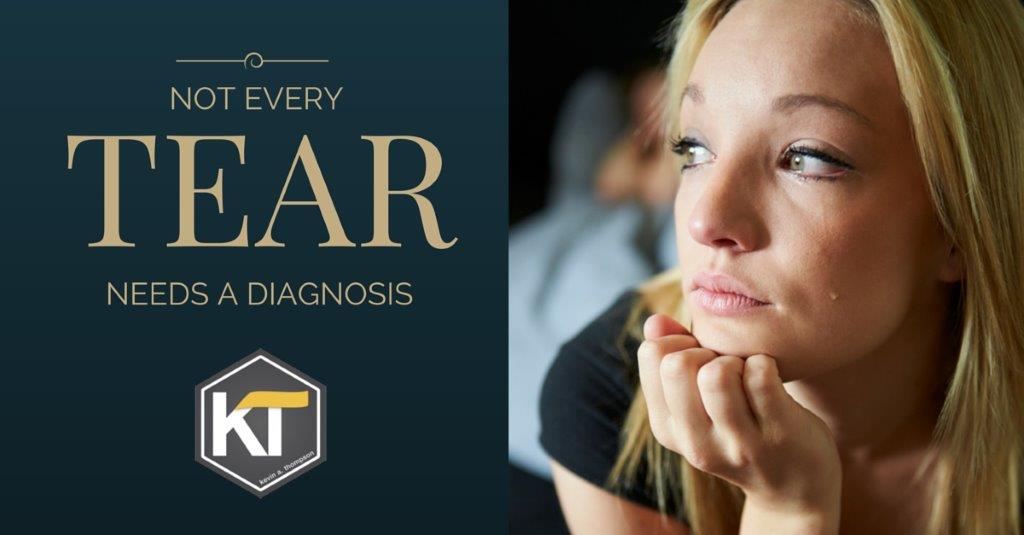You need to feel sad.
Not all the time.
Not even most of the time.
But some time, more often than you desire, you need to feel sorrow.
And in some seasons of life, your sorrow may be long-lasting. (See: What the Smartest People Rarely Know)
We live in a diagnosis culture. Every ailment, every illness, every set of symptoms awaits a proper diagnosis. It’s a great part of the day in which we live. I often tell patients before surgery, “Today is the best day to ever have what you have. The only possible better day would be tomorrow.”
Technology and science have expanded the capabilities of skilled professionals, empowering them to solve many issues from life-threatening illnesses to common annoyances.
Yet this culture has a downside.
The prevailing expectation of today is that every hurt, sorrow, sadness, and grief should be diagnosed and cured. By popping a pill, doing an exercise, or having a session, the expectation is that we can quickly eradicate our sadness.
We can’t.
And we shouldn’t try. (See: An Ever Changing Grief)
Without question, some sorrow can, and should, be eliminated.
Many people carry around the baggage from past experiences, hurts, or mistakes, and the sadness lingers for years. Their denial, creating an unwillingness to confront the past issues, causes a single event to define whole decades of their lives.
Others experience chemical or biological changes which create anxiety or depression. Medication can often help.
But not every tear needs a diagnosis. Not every pain should be cured.
Sadness, sorrow, and grief are an important part of life. While we should never force negative emotions, we should embrace them as a vital element of processing the world in which we live.
At times, we should be sad. (See: Life Lesson from Ella–It’s Okay to Laugh and Cry)
Yet in today’s Dr. Phil and pop-a-pill culture, we assume sadness is a sign that something is wrong. Often, however, it is a sign that something is right.
Sorrow can be for our benefit. It can call us out of denial and into reality. Not everything in life will go our way. We will experience loss. Grief will be an aspect of life. Heartache and dashed dreams are an unavoidable aspect of being human.
Whenever we label every sadness as a diagnose-able condition, we are implying two things:
1. Sadness isn’t justified unless it can be explained (and specifically diagnosed)
2. Every sadness is in need of a cure.
We diagnose every tear because we are uncomfortable with sorrow. A diagnosis gives justification for our sorrow. Without the justification, we feel our grief is invalid. No wonder we feel this way when our society is so uncomfortable with any expression of sorrow. Before you can even shed a tear, someone will hand you a Kleenex. It looks like compassion, but it’s actually a quick announcement that tears are not welcome. We expect people to grieve in private, cry in a closet, and after they have regained their composure, they are welcomed back to the real world.
In a world where everyone is expected to answer “I’m good” when asked, “How are you doing,” is it any wonder that we feel the need to justify our sadness? (See: Four Things to Never Say to Someone Grieving)
Yet the justification is also about our greater desire–a cure. If we can diagnose it, we can solve it.
Sorrow and grief are the emotional equivalent of a childhood fever. Many pediatricians believe a fever is a useful mechanism by the body. It can be a good sign the body is fighting a cold. Yet tell that to a concerned parent. Most parents just want the fever to be gone.
The same is true with sorrow. We just want it gone even if the argument can be made that it is useful to us. We want to diagnose our sadness so we can figure out the proper prescription. People look to me for the perfect prayer while others look to doctors for the right pill or to the psychologist for the right session. Whatever it takes, fix the sorrow so we can be happy again. (See: What to Do When Life Falls Apart)
But this is a dangerous way to look at sadness. Rather than diagnosing every tear, it might be better to simply cry every tear. To truly grieve the great sorrows of life could be one of the most productive and healthy processes we can endure. Rather than trying to figure everything out or diagnosing everything, just be sad. Recognize it, admit it, understand you won’t feel this way forever, and process through the sorrow.
You might not be able to do it alone. You might need help either from a friend, a pastor, or a professional. But the normal sorrows of life are just that–they are normal. The quicker we become comfortable with grief and sadness, the more kind we will be to ourselves and others whenever we face the sorrows of life.
Not every tear needs a diagnosis.




One Response to Not Every Tear Needs a Diagnosis